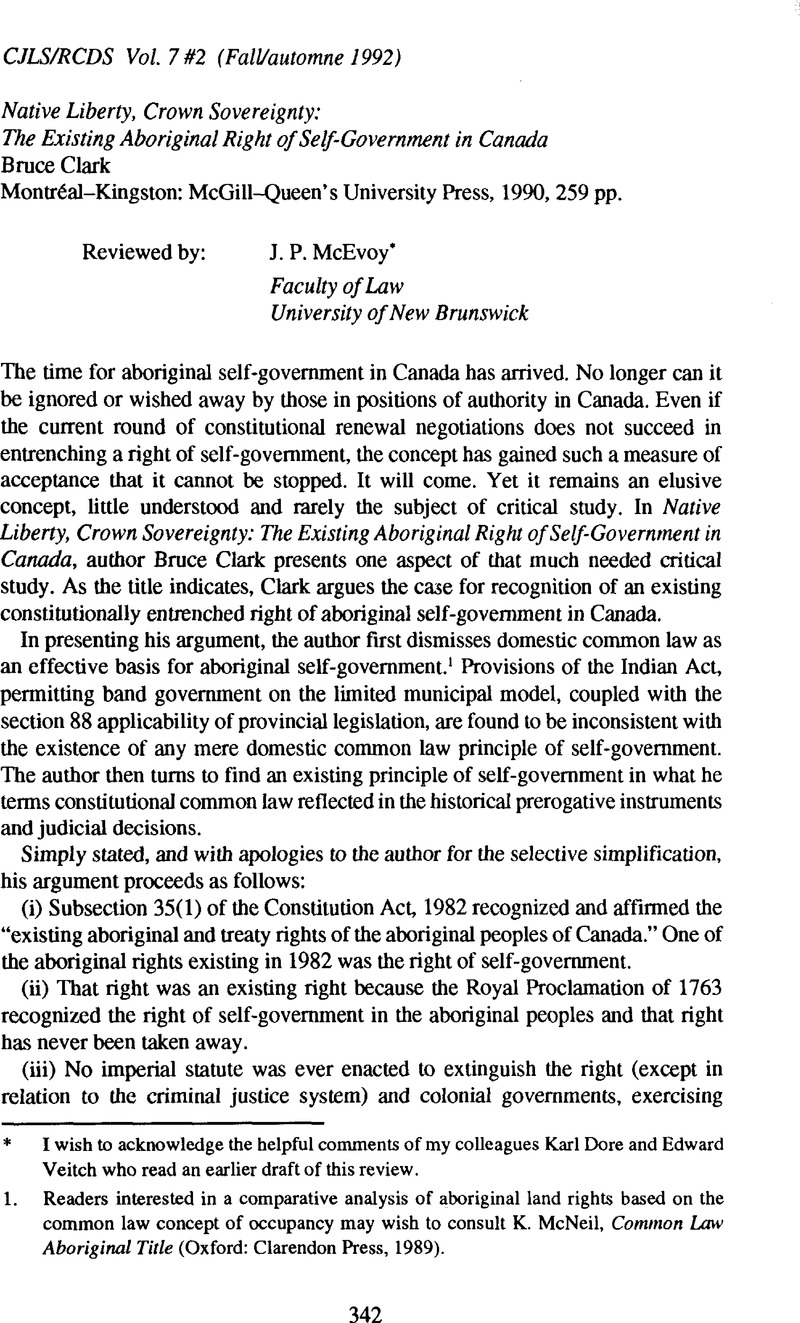No CrossRef data available.
Published online by Cambridge University Press: 18 July 2014

1. Readers interested in a comparative analysis of aboriginal land rights based on the common law concept of occupancy may wish to consult McNeil, K., Common Law Aboriginal Title (Oxford: Clarendon Press, 1989)Google Scholar.
2. An Act for Preventing Frauds, and Regulating Abuses in the Plantation Trade, 7 & 8 Wm. III, c. 22 (1696)Google Scholar and An Act for Better Securing the Dependency of His Majesty's Dominions In America upon the Crown and Parliament of Great Britain, 6 Geo. III, c. 12(1766)Google Scholar.
3. Per Denning, Lord in R v. Secretary of State for Foreign and Commonwealth Affairs, [1982] 2 All E.R. 118 (C.A.)Google Scholar.
4. Including a long-ignored, if not forgotten in Canada, 1773 decision of the Privy Council, Mohegan Indians v. Connecticut. This decision was an appeal to the Crown in council from the conclusions of a royal commission appointed to investigate and report on the claims of the Mohegan Indians in relation to deeded land in Connecticut. This affair took seventy years from the first application by the Indians until the final resolution dismissing their claims. Its significance, according to the author, lies in the recognition by the majority of the royal commissioners and inferentially by the Privy Council (in rejecting a preliminary jurisdictional plea) that the Mohegan Indians were sovereign. Though generally not referred to in Canadian books on aboriginal rights, the case is referred to in American sources—see Cohen, F., Handbook of Federal Indian Law (1982 ed.) at 30–31, 513–14Google Scholar.
5. An Act for Extending the Jurisdiction of the Courts of Justice in the Provinces of Lower and Upper Canada to the Trial and Punishment of Persons Guilty of Crimes and Offences within Certain Parts of North America, 43 Geo. III, c. 138 (1803)Google Scholar and An Act for Regulating the Fur Trade and Establishing a Criminal and Civil Jurisdiction within Certain Parts of North America, 1 & 2 Geo. IV, c. 66 (1821)Google Scholar. Discussed at 100–02.
6. For example, a lengthy quote at pp. 28–29 is repeated at 43–44, and a quote at 100 is repeated at 126. Case analysis completed in one chapter is repeated in another as if the chapters were distinct.
7. See Hohfeld, W. N., “Some Fundamental Legal Conceptions As Applied in Judicial Reasoning” (1913) 23 Yale L.J. 16CrossRefGoogle Scholar and (1917) 26 Yale L.J. 710.
8. See Johnson v. McIntosh, 8 Wheat. 543, 574 (1823); Cherokee Nation v. Georgia, 5 Peters 1, 16 (1831).
9. 6 Peters 515 (1832) (U.S.S.C).
10. E.g. R. v. McMaster, [1926] Ex. C.R. 68.